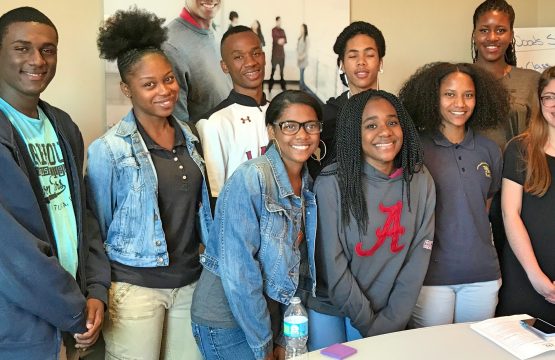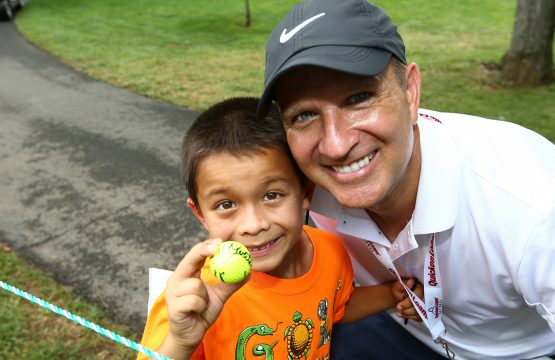Tracking the Transition: Digital Content in Our Schools
 Earlier this month, Tiger Woods Foundation’s VP of Programs and Education, Dr. Katherine Bihr, had the opportunity to present at Discovery Education’s annual Superintendent Digital Transition Symposium in San Diego, California. Speaking to hundreds of superintendents as well as district and thought leaders from across the U.S., Bihr and conference host and co-presenter Dr. Karen Gallagher, Dean of USC’s Rossier School of Education, addressed the vital need to research, implement and track the use of digital technology in the classroom.
Earlier this month, Tiger Woods Foundation’s VP of Programs and Education, Dr. Katherine Bihr, had the opportunity to present at Discovery Education’s annual Superintendent Digital Transition Symposium in San Diego, California. Speaking to hundreds of superintendents as well as district and thought leaders from across the U.S., Bihr and conference host and co-presenter Dr. Karen Gallagher, Dean of USC’s Rossier School of Education, addressed the vital need to research, implement and track the use of digital technology in the classroom.
Among the many important responsibilities of a district education leader, the need to develop, articulate and uphold the vision for schools, teachers and students sits at the top of the list. And as new state-of-the-art resources and tools enter the market and become available to students, education leaders must think about ways to effectively select and integrate these tech tools into the classroom. Historically, schools and educators are notoriously slow to integrate new technologies into classrooms. A 2015 survey of school administrators showed that 57% believe there are two barriers to implementing digital content in the classroom: providing enough hardware with internet access and the lack of teacher training.
During Discovery Education and the USC Rossier School of Education’s two-day symposium, education leaders connected on and discussed the digital transition in their schools and explored the variety of barriers to digital transition in schools.
One of the first questions posed was whether education leaders agreed with the survey data. Is there a shortage of hardware? Most indicated that this wasn’t necessarily a concern but agreed that the speed in which change occurs may make it difficult to keep current. The issue of teacher training seemed to bring about much more consensus from participants. Of added concern, was the perceived willingness of classroom teachers to utilize technology in an integrated fashion; one that supplements and enhances instruction versus a disconnected tool.
Training educators to not only use technology but to also evaluate its efficacy for classroom use is an imperative often overlooked. Some districts have taken the evaluation of content out of the hands of teachers and use a centralized approach to determining content and delivery. While this may have been necessary and a good approach twenty years ago, it strips the professional educator of the ability to make decisions about lesson plan design and implementation. Still it is critical that educators are provided with some assistance in determining which content is appropriate for student and classroom use.
There is no shortage of online resources, but the definition of digital content can be widely applied to literally anything available on the internet – a blog, a graphic, a digital video, interactive games and an e-book can all be considered eligible for consumption. However, determining the appropriate use of these materials is a matter of quality. So how do teachers determine whether a particular video clip, online lesson or interactive game is appropriate for their classroom? When do these digital resources become adequate and effective instructional tools? How do we prevent these resources from becoming the new worksheet – bland, “drill and kill”, busy work designed to give the appearance of engagement?
It is clear there are numerous considerations surrounding the selection and use of digital content. But none should take precedence over ensuring that students are provided with the opportunity and access to those resources that ensure their ability to navigate the digital world. This takes leadership from both the district and school level. District staff needs to prioritize and set policies that ensure that teachers have the appropriate access, training and time to develop lessons that integrate digital content. School leaders in turn are responsible for ensuring that each student is receiving instruction that goes beyond textbook, worksheet and antiquated methods of teaching. The best resources for our teachers and students are right at our fingertips—it’s up to all of us as education leaders to make sure they have the opportunity to grasp them.
Redefining what it means to be a champion.


